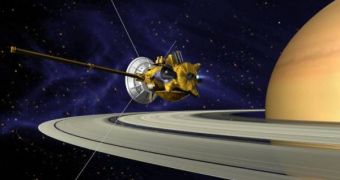Due to a slow, but steady decrease in Cassini's main thrusters, the spacecraft's managing team at NASA has decided to switch propulsion control over to the backup set, in the aftermath of the mission's extension. In 2008, the American space agency received funds to continue exploring Saturn and its moons for another two years, as the probe proved to be very resilient and handled itself well during the seven years it took for it to reach the distant gas giant. In the 12 years since Cassini has been operational, its main thrusters have degraded, and that's only natural.
Scientists at NASA now bless their inspiration to have put another identical set of thrusters on the craft, just in case. The new thrusters have about the same configuration as the primary ones, and can easily accomplish all the functions that their predecessors did. These engines are an absolute requirement for the orbital correction that each orbiter has to make when it reaches its target planet. Even the International Space Station (ISS), which is in our back yard, needs adjustments, as it moves around the Earth in low orbit.
Cassini is powered by three radioisotope thermoelectric generators (RTGs), which use heat emitted from the natural decay of plutonium for generating electricity. Because the craft is powered by 32.8 kilograms (72 pounds) of the radioactive element, the project has attracted numerous protests from environmental groups, as well as from some retired NASA officials, who have said that the risk sported by the mission, of the carrier vehicle exploding in the lower atmosphere or in Earth’s orbit, is simply too great to take. Fortunately, the mission has made it out of Earth's gravitational pull without a hitch, and the craft has been able to reach its target.
According to the original NASA predictions, which held that the duration of the mission would be of 11 years, the three thrusters would still be able to produce as much as 628 watts of electricity, more than enough to operate the 12 instruments aboard the Saturnine “spy.” NASA is now spending some $80 millions each year in keeping Cassini alive, and plans have already been approved to extend the mission through 2010. Mission controllers plan to ask the Congress for even more money, so as to carry on the flight even further, possibly until 2017. Most of the instruments aboard the probe have backups installed.

 14 DAY TRIAL //
14 DAY TRIAL //